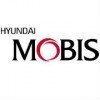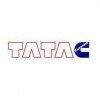Filter interviews by
Echjay Industries QA Head Interview Questions and Answers
Echjay Industries QA Head Interview Experiences
1 interview found
I applied via Approached by Company and was interviewed in Jun 2024. There was 1 interview round.
(2 Questions)
- Q1. Qualified the Forgings questions
- Q2. Qualified the Machining Questions.
Interview Preparation Tips
Top trending discussions






Interview questions from similar companies

I applied via Campus Placement and was interviewed before Apr 2020. There was 1 interview round.
Interview Questionnaire
1 Question
- Q1. Try to all the interview very fastly
Interview Preparation Tips

I applied via Company Website and was interviewed before Apr 2020. There was 1 interview round.
Interview Questionnaire
1 Question
- Q1. What is your plus?
Interview Preparation Tips

I applied via Recruitment Consultant and was interviewed before Mar 2020. There were 4 interview rounds.
Interview Questionnaire
2 Questions
- Q1. Technical
- Q2. Stamping
Interview Preparation Tips


How to tackle your supplier or treat your suppliers if suppliers payment already delayed and he is denying to providing further material.
(4 Questions)
- Q1. Which grade raw material you are using in current company and what was the difference in grade wise.
- Ans.
We are currently using grade A raw materials in our company. The difference in grades lies in the quality, purity, and cost of the materials.
Grade A raw materials are of the highest quality, with superior purity and consistency.
Grade B raw materials may have slightly lower quality and purity compared to Grade A.
Grade C raw materials are typically the lowest quality and may have inconsistencies in purity and composition
- Q2. How you finalised the costing, what was the process behind that.
- Ans.
Costing is finalised through a detailed process involving analysis of expenses, pricing strategies, and market trends.
Analyze all expenses incurred in the production process, including raw materials, labor, and overhead costs.
Consider pricing strategies such as cost-plus pricing, value-based pricing, or competitive pricing.
Evaluate market trends and competitor pricing to ensure competitiveness and profitability.
Finaliz...
- Q3. How you calculate the overhead in costing ?
- Ans.
Overhead in costing is calculated by dividing total indirect costs by a relevant cost driver.
Identify all indirect costs incurred in the production process.
Determine a relevant cost driver, such as machine hours or labor hours.
Divide the total indirect costs by the cost driver to allocate overhead.
For example, if total indirect costs are $10,000 and the cost driver is machine hours at 1,000 hours, the overhead rate wou
- Q4. How you calculate that, which operation needs which tonnage?
- Ans.
Tonnage calculation for operations involves analyzing factors like material type, thickness, cutting speed, and machine capacity.
Analyze the material type being processed
Consider the thickness of the material
Take into account the cutting speed of the machine
Ensure the tonnage does not exceed the machine's capacity
Use formulas or charts provided by the machine manufacturer for guidance
Interview Preparation Tips

I applied via Campus Placement and was interviewed in Dec 2020. There were 4 interview rounds.
Interview Questionnaire
2 Questions
- Q1. Personal
- Q2. Technical
Interview Preparation Tips
Make things simple.

I applied via Naukri.com and was interviewed before Nov 2021. There were 3 interview rounds.

(1 Question)
- Q1. 1 -Self introduction 2- what was roll and responsibilities in your privious company. 3-about 7 qc tools 4-kaiez,5s extra.
(1 Question)
- Q1. 1-Self introduction 2-hobbey 3-what do you want in future.
Interview Preparation Tips

(11 Questions)
- Q1. Tell me brief introduction of your family and working background?
- Q2. Explain about high pressure molding line working process and parameter ?
- Ans.
High pressure molding line is a manufacturing process where materials are compressed under high pressure to create products.
Materials are placed in a mold cavity and compressed under high pressure to form the desired shape.
Parameters such as temperature, pressure, and cooling time are carefully controlled to ensure quality and consistency.
Examples of products made using high pressure molding line include automotive par...
- Q3. Explain about Sand plant function and operation?
- Ans.
Sand plant functions to wash, screen, and classify sand for various construction purposes.
Sand plant washes the sand to remove impurities and clay particles.
It screens the sand to separate different sizes for specific applications.
Sand plant classifies the sand based on particle size and shape.
Examples: Sand plants are used in concrete production, glass manufacturing, and foundries.
- Q4. Explain about sand plant additive dosing percentage and how to control raw material consumption of sand plant?
- Ans.
Sand plant additive dosing percentage is the amount of additive added to the sand in the plant to improve its properties. Controlling raw material consumption involves monitoring and adjusting the dosing percentage.
Monitor the dosing percentage regularly to ensure it is within the desired range
Adjust the dosing percentage based on the quality of the sand and production requirements
Use automation and control systems to ...
- Q5. Explain about DISA molding parameter and box size , how to control mold related rejection ?
- Ans.
DISA molding parameters and box size are crucial factors in controlling mold-related rejection.
DISA molding parameters include factors like sand temperature, compactability, and moisture content.
Box size refers to the dimensions of the mold box used in the molding process.
To control mold-related rejection, ensure proper calibration of DISA molding parameters.
Regularly monitor and adjust box size to meet the requirement...
- Q6. Explain difference between vertical and horizontal pouring system , Which type of challenges faced in vertical molding and horizontal molding line?
- Ans.
Vertical pouring system involves pouring metal vertically into the mold, while horizontal pouring system involves pouring metal horizontally.
Vertical pouring system allows for better control over the flow of metal into the mold.
Horizontal pouring system is typically used for larger molds where the weight of the metal could cause issues in a vertical system.
Challenges in vertical molding include ensuring even distributi...
- Q7. Explain about core making process also explain how to control raw material in core shop?
- Ans.
Core making process involves creating sand cores to be placed inside molds for casting metal parts. Raw material control in core shop is crucial for quality cores.
Core making process involves mixing sand with a binder to create a core that is then placed inside a mold for casting metal parts.
Raw materials such as sand, binder, and additives need to be carefully controlled in terms of quality, quantity, and consistency ...
- Q8. Explain about shell core process and parameter ?
- Ans.
Shell core process is a method used in foundry casting to create hollow cavities in metal castings.
Shell core process involves creating a shell of sand mixed with resin around a pattern to create a hollow cavity in the final casting.
Parameters in shell core process include shell thickness, resin type, curing time, and shell permeability.
Example: In automotive industry, shell core process is used to create complex engin
- Q9. Knowledge Of IATF 16949 ?
- Q10. Explain about furnace capacity and which type of grade you handle in last organisation?
- Ans.
Furnace capacity refers to the maximum amount of material that can be processed in a furnace at one time. In my previous organization, I handled high-grade steel in the furnace.
Furnace capacity is crucial for determining production output and efficiency.
Different types of furnaces have varying capacities based on their design and size.
Handling high-grade materials in the furnace requires precise temperature control and...
- Q11. Raw material consumption control of melting department?
- Ans.
Raw material consumption control in melting department involves monitoring and managing the usage of materials to ensure efficiency and cost-effectiveness.
Regularly monitor raw material inventory levels
Analyze consumption patterns and identify areas for improvement
Implement measures to reduce waste and optimize material usage
Collaborate with procurement team to ensure timely supply of materials
Utilize software systems
(2 Questions)
- Q1. Family background and salary discussion ?
- Q2. What is your goal of after 5 year?

I applied via Walk-in and was interviewed in Nov 2024. There were 6 interview rounds.
(2 Questions)
- Q1. Can you provide an introduction about yourself?
- Ans.
Experienced engineer with a background in mechanical and electrical engineering, specializing in project management and problem-solving.
Bachelor's degree in Mechanical Engineering from XYZ University
5+ years of experience working in the automotive industry
Proficient in CAD software such as SolidWorks and AutoCAD
Led a team of engineers to successfully launch a new product line
- Q2. What is the organizational structure of the toolroom?
- Ans.
The toolroom is typically organized in a hierarchical structure with a manager overseeing toolmakers and machinists.
Typically led by a Toolroom Manager who oversees the operations
Toolmakers and machinists report to the Toolroom Manager
May have specialized teams for different types of tools or machinery
Collaborates closely with engineering and production departments
(2 Questions)
- Q1. Organization structure
- Q2. What is the process of mold maintenance?
- Ans.
Mold maintenance involves regular cleaning, inspection, and repair of molds used in manufacturing processes.
Regularly clean molds to prevent buildup of residue or contaminants
Inspect molds for wear and tear, cracks, or other damage
Repair any issues found during inspection to ensure molds function properly
Store molds properly when not in use to prevent damage or contamination
Encourage a positive culture that fosters the development of new ideas and activities for improvement.
(2 Questions)
- Q1. What is the difference between corrective action and preventive action?
- Ans.
Corrective action is taken to address an existing issue, while preventive action is taken to avoid potential issues in the future.
Corrective action is reactive, addressing problems that have already occurred.
Preventive action is proactive, aiming to prevent problems from happening in the first place.
Corrective action focuses on fixing the root cause of a problem.
Preventive action focuses on identifying and eliminating ...
- Q2. What are the differences between preventive maintenance and predictive maintenance?
- Ans.
Preventive maintenance is scheduled maintenance performed on a regular basis to prevent breakdowns, while predictive maintenance uses data and analytics to predict when equipment will fail.
Preventive maintenance is scheduled at regular intervals to prevent breakdowns.
Predictive maintenance uses data and analytics to predict when equipment will fail.
Preventive maintenance is time-based, while predictive maintenance is c...
(2 Questions)
- Q1. What is breakdown maintenance?
- Ans.
Breakdown maintenance is a type of maintenance where equipment is only repaired after it has broken down.
Breakdown maintenance is reactive in nature, as repairs are only done after a breakdown occurs.
It can lead to increased downtime and production losses.
This type of maintenance is usually more costly compared to preventive maintenance.
Examples include fixing a machine only when it stops working or repairing a vehicle
- Q2. What is the frequency of preventive maintenance?
- Ans.
The frequency of preventive maintenance varies depending on the equipment and industry standards.
Frequency of preventive maintenance is typically determined by equipment manufacturer recommendations.
Some industries may have specific regulations or standards that dictate the frequency of preventive maintenance.
Factors such as usage, environmental conditions, and criticality of the equipment can also influence the freque...
(2 Questions)
- Q1. Lifter pad and lifter different
- Ans.
Lifter pad and lifter are different components used in mechanical systems.
Lifter pad is a component used to support and lift heavy objects, while lifter is a device used to lift and move objects vertically.
Lifter pads are often made of rubber or other materials to provide cushioning and grip, while lifters can be hydraulic, pneumatic, or mechanical.
Lifter pads are stationary and provide a stable base for lifting, while...
- Q2. What is the frequency of tool life
- Ans.
The frequency of tool life refers to how often a tool needs to be replaced or maintained.
Frequency of tool life is determined by factors such as material being worked on, cutting speed, and tool material.
Higher cutting speeds or harder materials may require more frequent tool changes.
Regular maintenance and monitoring can help extend tool life and reduce frequency of replacements.
Interview Preparation Tips

I applied via Naukri.com and was interviewed before Apr 2023. There was 1 interview round.
(1 Question)
- Q1. Cnc programming, New product development
Echjay Industries Interview FAQs
Tell us how to improve this page.
Echjay Industries Interviews By Designations
Interview Questions for Popular Designations
Echjay Industries QA Head Interview Process
based on 1 interview
Interview experience
Interview Questions from Similar Companies
Echjay Industries QA Head Reviews and Ratings
based on 1 review
Rating in categories
|
Production Supervisor
17
salaries
| ₹1.8 L/yr - ₹4.5 L/yr |
|
Quality Engineer
15
salaries
| ₹1.7 L/yr - ₹5 L/yr |
|
Production Engineer
13
salaries
| ₹1.5 L/yr - ₹5.2 L/yr |
|
Junior Engineer
12
salaries
| ₹2.4 L/yr - ₹5.5 L/yr |
|
Senior Engineer
11
salaries
| ₹3.6 L/yr - ₹5.6 L/yr |

Delphi TVS

Motherson Automotive Technologies and Engineering

Belrise Industries

Krishna Maruti
- Home >
- Interviews >
- Echjay Industries Interview Questions >
- Echjay Industries QA Head Interview Questions











